 by "ttyymmnn" (ttyymmnn)
by "ttyymmnn" (ttyymmnn)
Published 12/15/2017 at 12:45
 by "ttyymmnn" (ttyymmnn)
by "ttyymmnn" (ttyymmnn)
Published 12/15/2017 at 12:45
Tags: planelopnik history
; Planelopnik
STARS: 6
!!! UNKNOWN CONTENT TYPE !!!
Welcome to
This Date in Aviation History
, getting of you caught up on milestones, important historical events and people in aviation from December 13 through December 15.
!!! UNKNOWN CONTENT TYPE !!!

December 15, 2009 – The first flight of the Boeing 787 Dreamliner. In the modern age of air travel, the battle among airline designers, particularly Boeing and Airbus, has been fought over passenger load and efficiency, with each company seeking ways to fly more passengers to distant destinations while using less fuel. A large part of that effort has gone into engine design, and modern airliner engines have become marvels of efficiency. With as much efficiency as possible being wrung out of the engines, the next logical step is to investigate new materials for the construction of the aircraft itself, materials that are strong yet light, as weight is one of the greatest enemies of fuel efficiency.
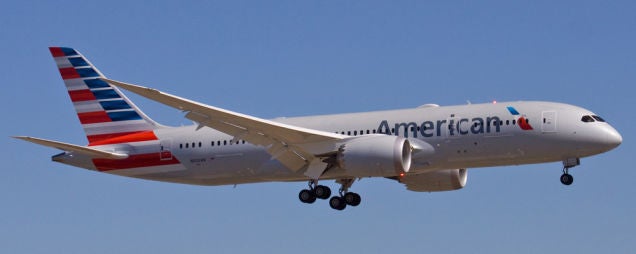
Boeing began to tackle the problem back in the late 1990s, when, as the airliner sales market started to cool off, they sought replacement aircraft to bolster sagging sales of their wide-body 747-400 and 767 . They considered the 747X, a lengthened version of the 747-400, and even the Sonic Cruiser , a radical delta wing aircraft which offered higher speeds than were currently obtainable. While the Sonic Cruiser was eventually abandoned in 2002 in favor of a more traditional design, which became the 787, much of what Boeing learned in the development of the Sonic Cruiser, particularly the use of carbon-fiber-reinforced polymers , was put to use on what Boeing called the Dreamliner. Boeing gave the new airliner the internal designation 7E7, and it was the first production airliner to be built from one-piece, composite sections rather than riveted aluminum. Ultimately, the final breakdown of materials was 50% composite, 20% aluminum, 15% titanium, 10% steel, and 5% other materials. According to Boeing, the savings in weight for this type of construction, coupled with two new engines, the Rolls-Royce Trent 1000 and General Electric GEnx high-bypass turbofans, made the 787 20% more fuel efficient than the 767 while carrying more passengers. Depending on the variant, the 787 can accommodate as many as 440 passengers in a single-class configuration (787-10), and can fly 8,786 miles on a single load of fuel.
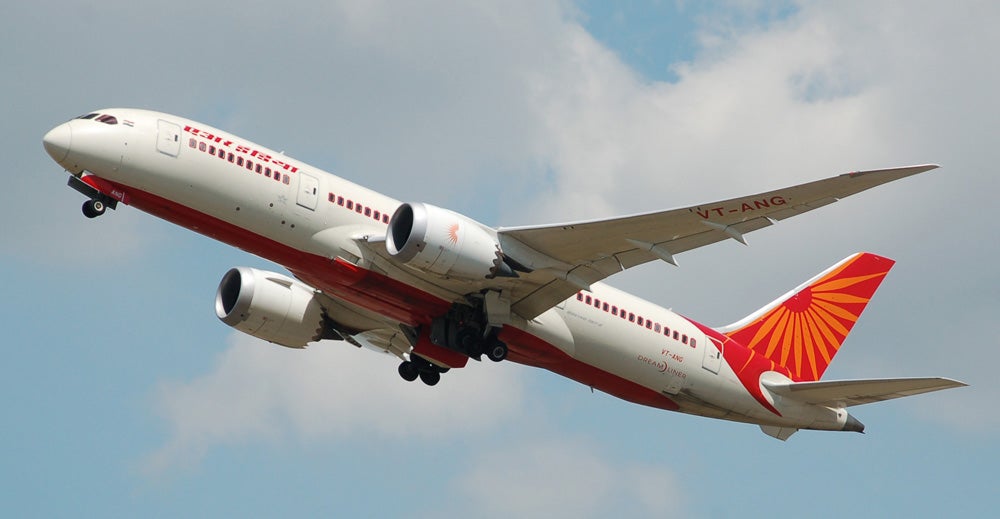
The development of such an innovative airliner as the 787 was plagued with delays. Boeing struggled to get the Dreamliner down to its intended weight, as some parts had to be redesigned with titanium, and other delays in obtaining fasteners and difficulty with the software kept pushing back delivery dates. Nevertheless, Boeing had 677 orders for the 787 by 2007, more than any other previous widebody. Following yet more delays, extensive testing, and certification, the first Dreamliner was officially delivered to the 787’s launch customer, All Nippon Airways (ANA), on September 25, 2o11 at the Boeing factory in Everett, Washington, and it entered service the following month. As of September 2017, Boeing had received
orders
for 1,283 Dreamliners, with 600 delivered. Production delays have pushed back some deliveries, but Boeing has worked hard to streamline the production process, and by January 2017 they planned to complete 14 aircraft per month, though they will need to sell 1,100 before they begin to turn a profit.
(
Photo by Spaceaero2 via
Wikimedia Commons
; photo by the author; photo by Adrian Pingstone)
!!! UNKNOWN CONTENT TYPE !!!

December 15, 2006 – The first flight of the Lockheed Martin F-35 Lightning II. Back in the early 1960s, both the US Navy and US Air Force needed to replace aging aircraft, and newly appointed Defense Secretary Robert McNamara , well known for his micromanagement of America’s war efforts in Vietnam, ordered that both branches must pursue a common aircraft in an effort to save money. Even though the two branches had very different requirements, McNamara dictated that the new aircraft, the General Dynamics F-111 , would be designed first for the Air Force, and development of a carrier-based version for the Navy would follow. Finding that there was no chance that the F-111 would become a successful naval fighter bomber, the Navy pulled out of the program and went their own way, developing the Grumman F-14 Tomcat .
Despite the difficulties faced by the US military in developing a single platform to satisfy very different requirements, the Pentagon once again embarked on a similar path with the announcement of the Joint Strike Fighter (JSF) competition in 1993. The goal was to develop a single basic aircraft that would serve the very different missions of the Air Force, Navy and US Marine Corps, as well as the needs of numerous export countries. It was hoped that the new fighter could perform the missions of the various aircraft it was slated to replace: the General Dynamics F-16 , Fairchild Republic A-10 , McDonnell Douglas F/A-18 , McDonnell Douglas AV-8B , and British Aerospace Harrier II . The competition for what would become the largest defense contract in history was fought between the Boeing X-32 and Lockheed Martin X-35 , and the X-35, which first flew on October 24, 2000, was declared the winner in 2001.
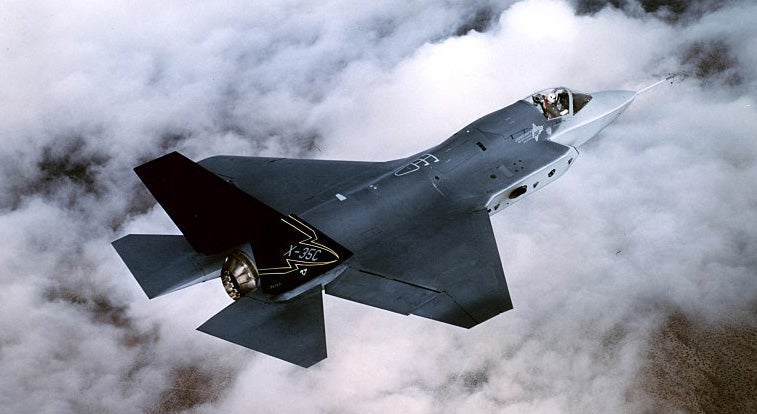
Lockheed Martin’s design, which drew on elements of their
F-22 Raptor
, featured
stealth technology
, integrated avionics, a computerized maintenance management system, and data networking to provide the pilot with unparalleled situational awareness. The use of nanocomposites, specifically
carbon nanotube
reinforced epoxy, makes the F-35 the first mass-produced aircraft to make use of these lightweight yet strong materials. The Lightning II is powered by a single
Pratt & Whitney F135
afterburning turbofan engine, and while it is not capable of
supercruise
, it can maintain a speed of Mach 1.2 for a distance of 150 miles.

To fulfill the varied requirements of the different branches of the military, the F-35 is produced in three main variants: the F-35A, a traditional fighter-bomber for the Air Force; the F-35B, a short take-off and vertical landing (STOVL) version for the Marine Corps; and the F-35C, a fully navalized variant for the US Navy. The Marine STOVL version has a pivoting engine nozzle for hovering, while the same engine powers a forward lift fan through a complex drive shaft. Takeoffs can be performed either vertically or by using a ski ramp, and a test program is underway to determine the feasibility of operating the F-35B from existing helicopter carriers.
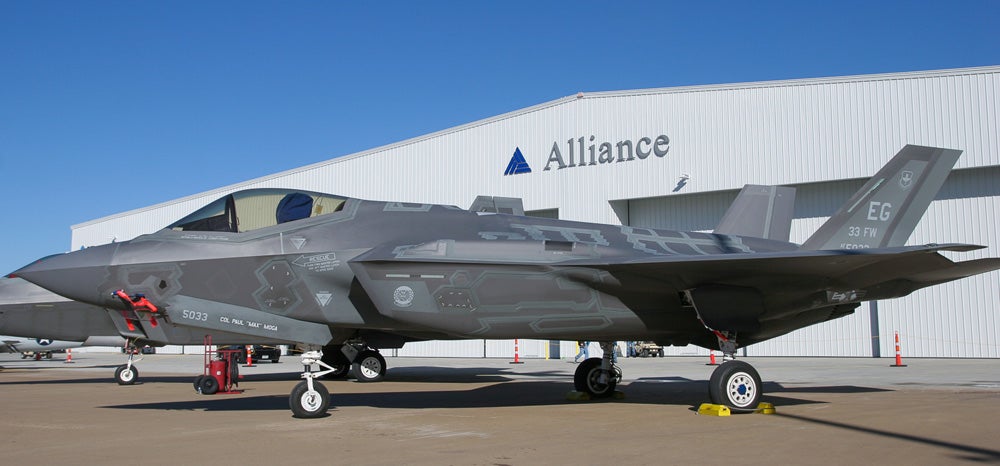
The entire F-35 program has been plagued with delays, software development problems and massive cost overruns, and, by 2014, it was $163 billion over budget and seven years behind schedule. Considering the entire development costs and operating budget for a planned 55 years of service, the F-35 program is projected to cost $1.1 trillion, making it the most expensive weapons program in history. These problems have led some international customers to reduce their commitment to buying the new fighter, but plans are still in the works for 3,146 F-35s to be built and delivered by 2035, with 1,763 ordered for the US Air Fore, 247 for the US Navy, and 733 for the US Marine Corps. In spite of continuing problems and systems that were not ready for battle, the Marines declared initial operating capability of the F-35B in July 2015, and the Air Force declared the F-35A combat ready in 2016, and forward deployment of the F-35A has already begun to global hotspots. The Navy’s F-35C is not expected to reach the fleet until 2018. (US Air Force photos; US Navy photo; photo by the author)
!!! UNKNOWN CONTENT TYPE !!!
!!! UNKNOWN CONTENT TYPE !!!
!!! UNKNOWN CONTENT TYPE !!!
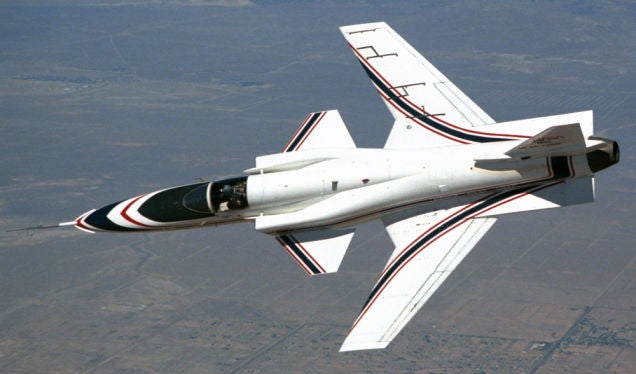
December 14, 1984 – The first flight of the Grumman X-29. Developed from two existing Northrop F-5A Freedom Fighter airframes, the X-29 was designed to explore the flight characteristics of forward-swept wings (pioneered by the Germans in WWII), canards, and other innovative design technologies. The X-29 also used fly-by-wire technology and flight control computers to take advantage of the inherently unstable design, and explored the use of carbon fiber construction in the wings to reduce weight. Grumman built two aircraft, and the X-29 became the first forward-swept wing aircraft to pass Mach 1 in level flight. Numerous experiments were carried out during its seven-year test program, and the aircraft have been retired and are displayed in the National Museum of the United States Air Force and the Armstrong Flight Research Center. (NASA photo)
!!! UNKNOWN CONTENT TYPE !!!
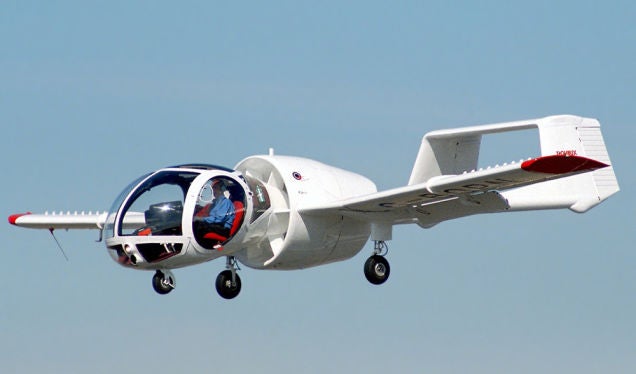
December 14, 1979 – The first flight of the EA-7 Edgley Optica, a light observation aircraft designed to be a low-cost alternative to helicopters. The unique design features a glazed bubble canopy set well forward which provides excellent visibility, a twin boom tail, and tricycle landing gear. The original Optica was powered by a Lycoming IO-320 engine driving a ducted, fixed-pitch propeller, an arrangement that resulted in very quiet operation. Production of 22 aircraft was followed by numerous changes in Edgley’s ownership, and financial difficulties led to a halt in production. However, the transportation consulting and finance firm InterFlight Global began investigating the possibility of restarting production in 2018 or 2019. (Photo by Anthony Noble via Wikimedia Commons )
!!! UNKNOWN CONTENT TYPE !!!

December 14, 1977 – The first flight of the Mil Mi-26, a heavy lift helicopter designed for civilian and military use and the largest and most powerful helicopter ever to enter production. Powered by two Lotarev D-136 turboshaft engines and fitted with an eight-bladed main rotor, the Mi-26 is capable of lifting 44,000 pounds and was designed to replace the Mi-6 and Mi-12 heavy-lift helicopters. The Mi-12’s main purpose is to move extremely heavy equipment between Russian military bases, such as armored personnel carriers and mobile ballistic missiles, with some payloads weighing as much as 29,000 pounds. A total of 316 Mi-26s have been built, and the helicopter remains in production. (Photo by ISAF Headquarters Public Affairs Office via Wikimedia Commons )
!!! UNKNOWN CONTENT TYPE !!!
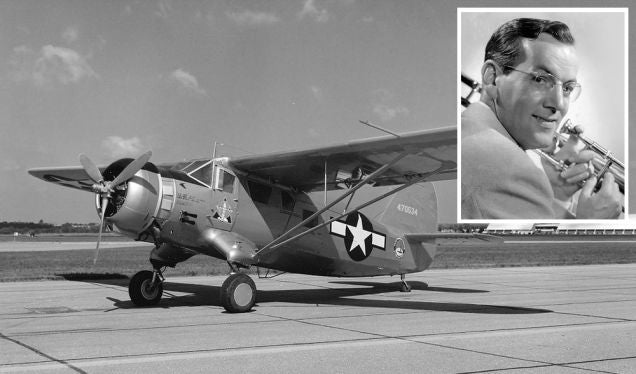
December 15, 1944 – The disappearance of Glenn Miller, one of the best-known and most prolific composers and performers of the Big Band Era . Wanting to take part in the war effort during WWII, Miller convinced the US Army to allow him to enlist at age 38 to form a “modernized Army band,” and he was given the rank of captain and soon promoted to major. While flying as a passenger on a flight from England to France for a performance, Miller’s Noorduyn UC-64 Norseman disappeared over the English Channel and was never found. It is not known what caused the disappearance, but a likely cause was engine failure from an iced carburetor. Another theory is that his plane strayed into an area where Allied bombers jettisoned unused bombs into the English Channel while returning to England, but plane spotters said that Miller’s aircraft was not headed into that area the last time it was seen. (Miller photo author unknown; Norseman photo via US Air Force)
!!! UNKNOWN CONTENT TYPE !!!
!!! UNKNOWN CONTENT TYPE !!!
!!! UNKNOWN CONTENT TYPE !!!
!!! UNKNOWN CONTENT TYPE !!!
!!! UNKNOWN CONTENT TYPE !!!
!!! UNKNOWN CONTENT TYPE !!!
!!! UNKNOWN CONTENT TYPE !!!
If you enjoy these Aviation History posts, please let me know in the comments. And if you missed any of the past articles, you can find them all at
Planelopnik History
. You can also find more stories about aviation, aviators and airplane oddities at
Wingspan
.
!!! UNKNOWN CONTENT TYPE !!!
 "jimz" (jimz)
"jimz" (jimz)
12/15/2017 at 13:01, STARS: 1
another significant area of improvement:
!!! UNKNOWN CONTENT TYPE !!!
 "ttyymmnn" (ttyymmnn)
"ttyymmnn" (ttyymmnn)
12/15/2017 at 13:16, STARS: 0
Turbojets vs. Turbofans. Even with hush kits, those old engines were stupid loud.
 "jimz" (jimz)
"jimz" (jimz)
12/15/2017 at 13:17, STARS: 0
I think that 707 even has the JT3D low-bypass turbofans. I can’t find any video of one with the original turbojets.
 "ttyymmnn" (ttyymmnn)
"ttyymmnn" (ttyymmnn)
12/15/2017 at 13:23, STARS: 0
You are probably right. I didn’t look all that closely.
 "Rust and Dust - Oppositelock Forever" (rustanddust)
"Rust and Dust - Oppositelock Forever" (rustanddust)
12/15/2017 at 13:27, STARS: 1
I had a Matchbox (I think) X-29 as a kid in the 80's! I’m sure the paint is chipped to hell and back, but I might have to go digging for it in my parents attic at Christmas.
I learned of Glenn Miller when digging through my Grandpa’s vinyl stacks years ago. I couldn’t think of a more appropriate tribute song than “Flying Home”.
!!! UNKNOWN CONTENT TYPE !!!
I’d like to think my Grandpa is hanging out with Krupa, Rich, Glenn, and Benny having a jam session for the ages right now.
 "ttyymmnn" (ttyymmnn)
"ttyymmnn" (ttyymmnn)
12/15/2017 at 13:34, STARS: 1
The BBC had a piece online this morning about a guy who believes he has solved the riddle of Glenn Miller’s death based on a plane spotter’s notebook. They didn’t give any details, since the information is found in a recently published book, but the author claims that “weather, equipment malfunction, and pilot error” caused the crash. I’m not sure how a teenaged plane spotter could be so sure of all those things, but I am intrigued to hear what this author found.

12/15/2017 at 13:40, STARS: 0
Wow, the Optica would not look out of place in a manga done by Masamune Shirow or Mamoru Oshii .
The Mi-26 is a deeply impressive aircraft, basically a rotor-borne C-130. The tail rotor is the same basic size and power output as the main rotor on a Loach . I’m also amused by Utair’s URL stenciled on the side of that Mi-26. I wonder what the guys at Mil would have made of that, or the pair of Mi-26s leased by Sportsflite to lift a pair of crashed Chinooks out of Afghanistan .

12/15/2017 at 13:48, STARS: 1
Remember when forward-swept wing aircraft toys were going to be the Next Big Thing™, like when GiJoe traded in the their F-14s for X-30s?

 "ttyymmnn" (ttyymmnn)
"ttyymmnn" (ttyymmnn)
12/15/2017 at 13:54, STARS: 1
basically a rotor-borne C-130
I like that. $300,000 to retrieve the Chinook? That sounds like a bargain.
 "Rust and Dust - Oppositelock Forever" (rustanddust)
"Rust and Dust - Oppositelock Forever" (rustanddust)
12/15/2017 at 14:07, STARS: 0
Yeah, there’s a bunch of conflicting information/records for that day.
http://www.mboss.f9.co.uk/twinwood/flight.htm
That page has a bunch of supporting documents/historical records of flights/weather/spotters for the day. It even mentions this spotters record, but questions the fact that he spotted the Norseman at 3000' in a 500' ceiling and mist, but could only hear other planes.
It still blows my mind that there was no wreckage found. It’s not like it’s the Earhart flight that went down somewhere in the vastness of the South Pacific. Granted, Southern England/Channel/Northern France is a large area without precise info, but with the number of people that live and travel the area, you’d think something would’ve been stumbled across in the past 70 years (unless the plane actually was blown to bits by a jettisoned 4k lb bomb).
 "ttyymmnn" (ttyymmnn)
"ttyymmnn" (ttyymmnn)
12/15/2017 at 14:13, STARS: 0
I’m kind of surprised that nobody has made any effort to find the wreckage. But I would bet there are quite a few a/c at the bottom of the Channel.
That was an interesting read. Thanks for the link.
 "facw" (facw)
"facw" (facw)
12/15/2017 at 14:30, STARS: 0
Grumman at one point proposed a forward sweep fighter for what eventually became the F-22:
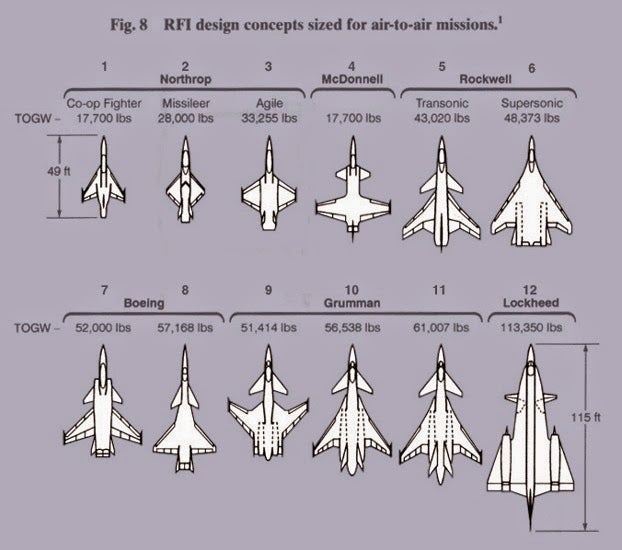

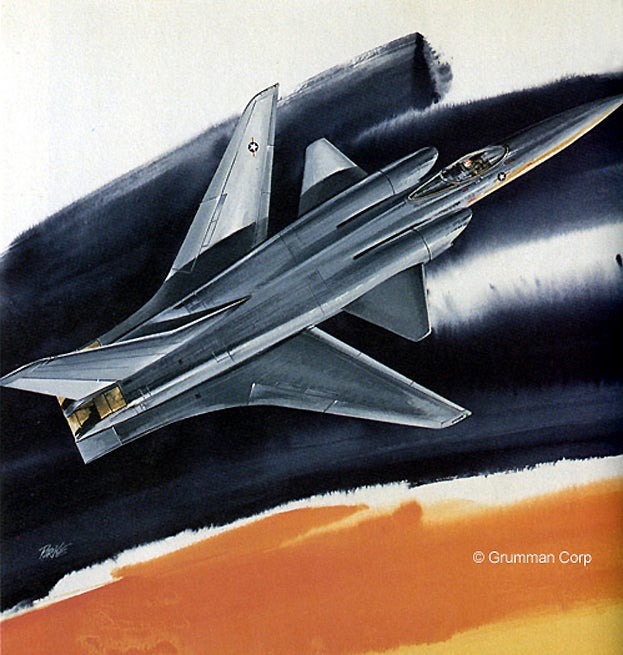

12/15/2017 at 14:42, STARS: 1
Looks like it’s got the same nozzles as the YF-23.
I also love the Lockheed: “How about the YF-12, now with retractable canards!”
 "facw" (facw)
"facw" (facw)
12/15/2017 at 17:06, STARS: 0
Yep, that was obviously their starting place.
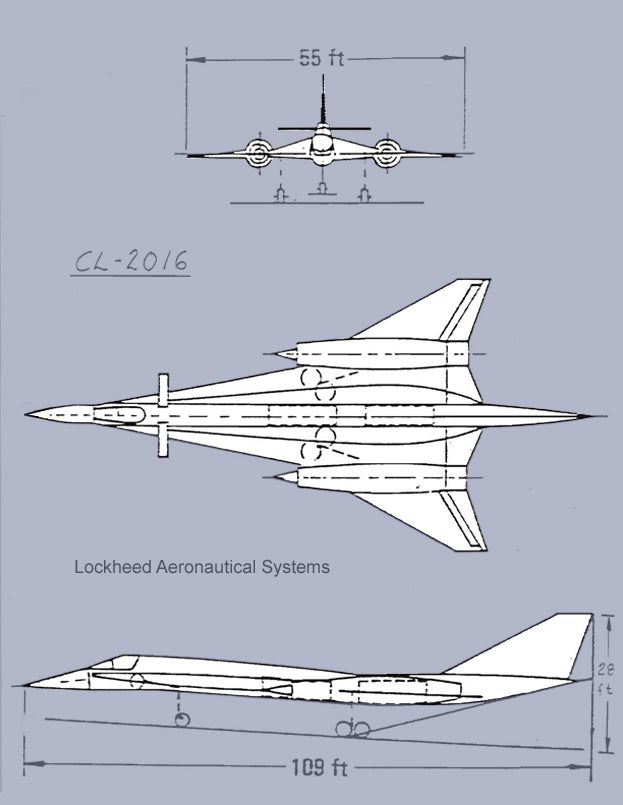
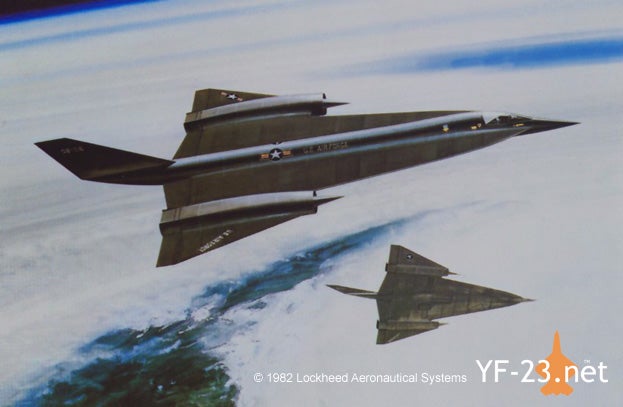

12/15/2017 at 17:18, STARS: 0
Now I’m sad we never got to see that.